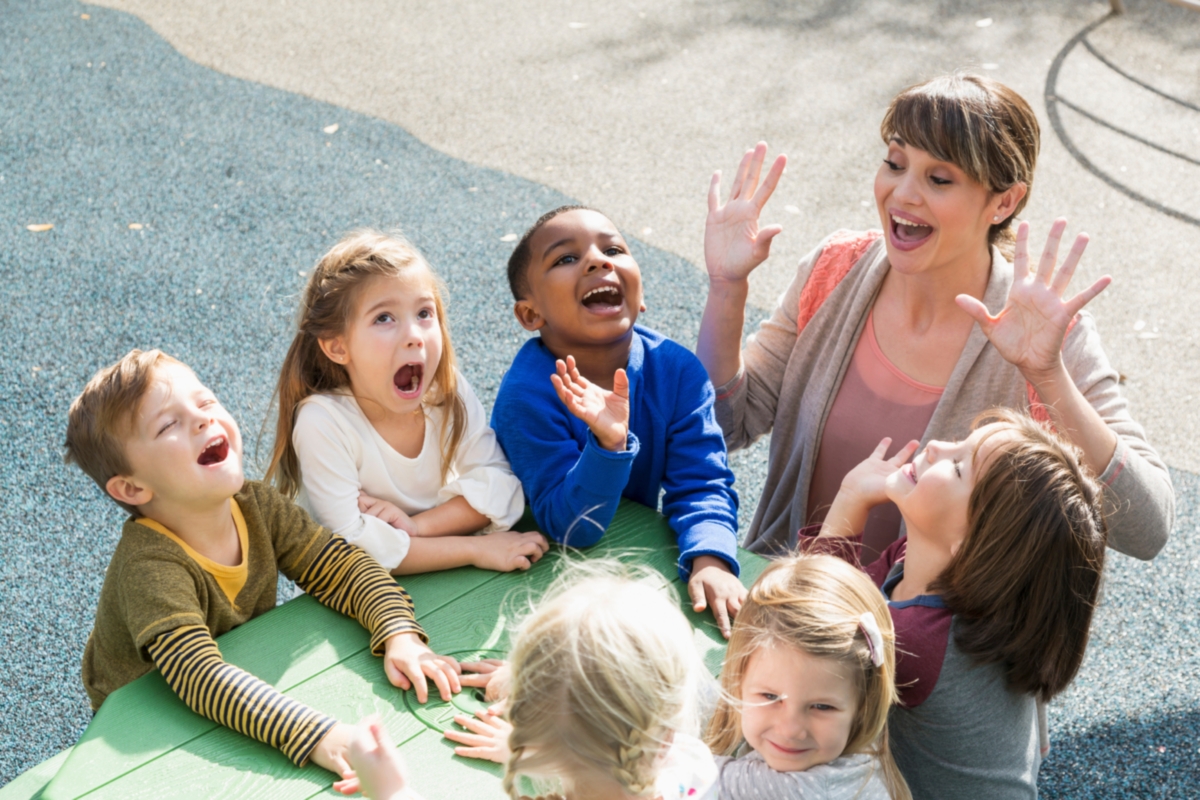Your young child probably loves to play with sounds, words and rhymes. It is one of the best ways for him to learn the language and listening skills needed for reading and writing. Let’s Play with Poetry!
Preschoolers and young students find words, sounds, and rhythms delicious. Nonsense rhymes, funny words and sounds, repeating patterns and rhythms…mix them up and put them all together and you have poetry! Playing with poetry is not only is a delightful language experience…it is also a perfect tool for positive interactions with your child.

Poetry Power
Even though rhymes and poems are very popular with children, many parents are reluctant to use poetry in the home. Are you? I once was. Maybe it was the “seriousness” many people equate with poetry, or perhaps it was childhood memories of memorizing poems to recite in front of the class! Fortunately, over the years I have realized that poetry is not only a luscious language activity but it actually is FUN.
Poetry is an excellent way to introduce vocabulary and literacy skills. Because poems are often predictable and brief, kids can master them quickly. For many, a poem or nursery rhyme may be their first successful “reading” experience. Choose illustrated nursery rhyme and poetry books. Your child will want to see the artthe expresses the words on the page.
Use Poetry Throughout the Day
Poems can be repeated often, so your child can quickly gain familiarity with them. Poems’ rhythms make them easy to remember while poems’ rhyming words make them accessible and predictable. Use Nursery Rhymes or simple poems and songs when you are doing simple tasks at home. The rhythm and repetition helps your child learn the sound and beat of the words.
When I am helping my grandson get dressed I start to recite, “One two buckle my shoe…”. He joins in immediately and finishes the rhyme. When we are on our way home I might say a line from a familiar rhyme such as “home again, home again, jiggity jig.” Sometimes we play with the rhyme and change some of the words. For example we extended this rhyme to include our cat “Tig”. The new rhyme became “home again, home again, jiggity jig to snuggle and cuddle with our little cat “Tig”!”
Playing with poetry is different from the “old days,” when children had to stand in front of the class and recite a memorized poem. (I was one of those shy kids who hated this!) “Saying” a poem togetheris a family“choral” experience to be shared and enjoyed by all. Keep it playful and fun!
Make Time for Rhymes
To make the most of the poems in your home, you might choose to introduce one poem a week. You can even choose a day to introduce the poem each week. Saturday is a great choice!
It is a way you can make the weekend special. You can check with your Kinderpillar teacher for some poem and rhyme suggestions. There are many great ones in our curriculum that you can use. You will be reinforcing school learning in a fun way at home.
Practice, Practice, Practice!
Nothing ruins a poem more than a flat, unpracticed reading! It is a great idea for you try out your poem or rhyme ahead of time. After saying it a few times you might discover dramatic sounds, movements and expressions to add to the reading. You will probably here your child say, “Do it again”.You can repeat the poem several times and then eventually you can invite your child to add a rhyming word here or a line there. This is a key reading and writing skill!
Tips for Sharing Rhymes at Home
The following are some tried-and-true techniques I have used to foster a love of rhymes and poetry.
- Whenever possible, add a hand or body motion to go with a rhyme or song. Children love movement, and even if they can’t remember the words, they can at least perform the motion with you!
- Repetition, repetition! Young children love to say, “Let’s do it again!” Listen to them! Repetition is the key to the development of many important language skills.
- Add props and puppets to help a poem come alive: Use one of your child’s stuffed animals, doll or puppet to “say” the poem.
- Write it down! Even if your child can’t read, he is still fascinated by letters and words. Using your best print handwriting to write out the poem on a large sheet of paper or poster board for your child to see and “read”.Invite your child to illustrate the poem!
- Use your cellphone to record yourself and your child saying the poem.
- Create poem “inventions” based on predictable repetitive poems and lyrics. (I once turned “I Know an Old Lady Who Swallowed a Fly” into “I Know a Poor Pelican Who Swallowed a Pie.” Amazingly, all he could eat were things that started with the letter “p”!)
- Introduce picture books that are based on poems or song lyrics.
But most of all…have fun with the sound, rhythm and rhyme of words. If your child loves words he will be a great reader!
